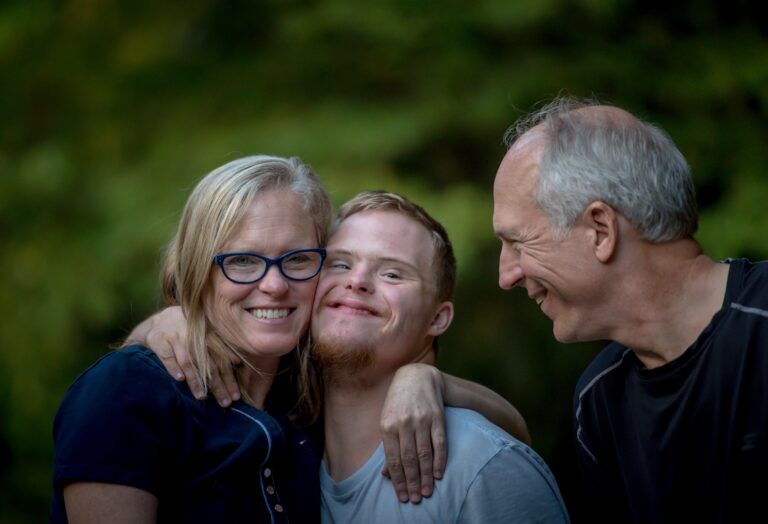In this enlightening article, we will take a closer look at the fascinating concept of soul ties and explore their profound impact on our lives. Have you ever wondered what exactly soul ties are and how they can shape our relationships, emotions, and spiritual connections? Get ready for a deeper insight into this intriguing phenomenon as we unravel the threads that bind us together in the realm of the soul. Get ready to embark on a journey of self-discovery and understanding with a friendly tone that will leave you intrigued and enlightened.

Understanding Soul Ties: A Deeper Insight
Soul ties are a fascinating and profound concept that encapsulates the deep connections we form with others on both spiritual and emotional levels. These connections can significantly impact our lives, shaping our thoughts, emotions, and behaviors. In this article, we will delve into the definition, nature, origins, types, recognition, effects, breaking, healing, preventing, and cultivating of soul ties. By gaining a deeper understanding of this concept, you can navigate your relationships more consciously and foster healthier connections with those around you.
Definition of Soul Ties
Explanation of Soul Ties
Soul ties refer to the spiritual and emotional connections that are formed between individuals, binding their souls together. These ties can be formed through a variety of relationships, such as friendships, family bonds, romantic partnerships, and even acquaintanceships. Soul ties are not limited to physical proximity or time spent with someone; rather, they transcend those boundaries and create a unique bond that can have profound effects on both individuals involved.
Spiritual and Emotional Connection
At the core of soul ties lies a heightened spiritual and emotional connection. This connection goes beyond the surface level interactions that we commonly experience in our daily lives. It involves a deep resonance and compatibility between two individuals’ souls, allowing them to understand, support, and empathize with one another on a more profound level. It is through this bond that individuals can feel a sense of profound closeness and unity with one another.
Biblical Perspectives on Soul Ties
Soul ties have been mentioned and explored in various religious and spiritual texts, including the Bible. In the context of Christianity, soul ties are often associated with sexual relationships and the idea that individuals become one flesh through physical intimacy. While this interpretation sheds light on one aspect of soul ties, it is important to recognize that soul ties extend beyond sexual relationships and encompass a much broader spectrum of connections.
Nature of Soul Ties
Invisible Bonds
One of the remarkable aspects of soul ties is their invisibility. Unlike physical bonds that can be seen and touched, soul ties exist on a metaphysical plane. They are intangible yet profoundly impactful, shaping individuals’ thoughts, emotions, and behaviors. Soul ties can be felt energetically, intertwining the auras and spiritual essences of those involved, creating an invisible bond that is difficult to sever.
Intimacy and Connection
Soul ties thrive on intimacy and connection. They transcend the superficial layers of relationships and dive deep into the core of individuals’ beings. Through soul ties, individuals experience a sense of deep knowing, vulnerability, and trust with one another. This level of intimacy fosters a profound sense of emotional connection, allowing individuals to share their thoughts, dreams, fears, and desires freely.
Energetic Interplay
Within soul ties, there is a constant energetic interplay between individuals. This interplay occurs on a spiritual level and involves the exchange of emotions, energies, and intentions. Through soul ties, individuals can feel each other’s emotional states, thoughts, and even physical sensations. This dynamic energetic exchange can have both positive and negative effects on those involved, influencing their overall well-being and affecting their energetic balance.
Origins of Soul Ties
Relationships and Interactions
Soul ties are formed through various relationships and interactions that individuals have throughout their lives. Positive soul ties can be cultivated through healthy and mutually supportive relationships, where individuals uplift and nourish one another. On the other hand, negative soul ties can arise from toxic or harmful relationships, where individuals experience emotional or psychological harm.
Sexual Intimacy
Sexual intimacy is often considered a powerful catalyst for the formation of soul ties. Through the act of physical union, individuals become attached on a deep spiritual and emotional level. This bond can be transformative and long-lasting, influencing individuals long after the physical connection has ended. It is important to approach sexual intimacy with mindfulness and discernment, understanding the potential impact it can have on soul ties.
Emotional Dependency
Another common origin of soul ties is emotional dependency. When individuals become overly reliant on others for their emotional well-being, they create a strong and often unhealthy bond. This dependency can manifest as clinginess, possessiveness, or an inability to function autonomously. It is crucial to cultivate emotional independence and self-sufficiency to prevent the formation of codependent or unhealthy soul ties.
Traumatic Experiences
Traumatic experiences can also lead to the formation of soul ties. In situations where individuals have shared intense suffering or traumatic events, their spirits can become fused together as they seek solace and support in one another. These soul ties can be particularly challenging to break or overcome, as they often involve complex emotions and deeply ingrained patterns of behavior.

Types of Soul Ties
Positive Soul Ties
Positive soul ties are nourishing, uplifting, and enriching connections that contribute to an individual’s growth and well-being. These soul ties are characterized by mutual respect, support, and a genuine desire for each other’s happiness. Positive soul ties can be found in platonic friendships, mentor-mentee relationships, healthy romantic partnerships, and supportive family bonds.
Negative Soul Ties
Negative soul ties, on the other hand, are detrimental and draining connections that hinder an individual’s personal growth and overall well-being. These soul ties often manifest in toxic and abusive relationships, where individuals experience emotional, psychological, or even physical harm. Negative soul ties can result in codependency, low self-esteem, and a perpetual cycle of dysfunction.
Voluntary and Involuntary Soul Ties
Soul ties can be either voluntary or involuntary. Voluntary soul ties are consciously formed through mutual consent and choice. These soul ties often arise from deep emotional connections, shared values, and a genuine desire to forge a bond with another person. Involuntary soul ties, on the other hand, can occur without conscious intention or consent. They may arise from traumatic experiences, energetic attachments, or societal influences.
Temporary and Permanent Soul Ties
Soul ties can also vary in their duration. Temporary soul ties are transitory connections that may serve a specific purpose or fulfill a particular need in our lives. These ties can be formed through casual interactions, short-term relationships, or situations where individuals share a temporary bond. Permanent soul ties, on the other hand, are enduring connections that withstand the test of time and remain strong throughout various seasons of life.
Recognizing Soul Ties
Emotional Attachments
Recognizing soul ties often begins with understanding and acknowledging the emotional attachments we feel toward certain individuals. Soul ties can evoke intense emotions, a sense of longing, or a deep desire for connection. If you find yourself consistently drawn to someone and experiencing strong emotional reactions in their presence, it may be a sign of the presence of a soul tie.
Codependency Patterns
Another key indicator of soul ties is the presence of codependency patterns. Codependency refers to a dysfunctional dynamic where individuals excessively rely on one another for their emotional well-being. If you find yourself feeling overly responsible for someone else’s emotions, enabling destructive behavior, or sacrificing your own needs for the sake of the relationship, it may be a signal of an unhealthy soul tie.
Unhealthy Obsessions
Unhealthy obsessions and preoccupations with someone can also be a sign of a soul tie. These obsessions may manifest as intrusive thoughts, constant longing, or an inability to detach emotionally from the person. If you find yourself fixated on someone to the point where it disrupts your daily life and relationships, it may be indicative of an intense and potentially unhealthy soul tie.
Recurring Intrusive Thoughts
Recurring intrusive thoughts about an individual, especially thoughts that are uncharacteristic of your usual thinking patterns, may point to the presence of a soul tie. These thoughts can be persistent and intrusive, making it difficult to focus on other aspects of your life. If you find yourself constantly thinking about someone, even when you consciously try to redirect your thoughts, it may be a sign that you have formed a soul tie with them.

Effects of Soul Ties
Emotional Bonding
Soul ties have a profound impact on our emotional well-being. They can intensify our emotions, amplifying both positive and negative experiences. Positive soul ties can provide a sense of love, acceptance, and support, enhancing our happiness and emotional fulfillment. On the other hand, negative soul ties can lead to emotional distress, anxiety, and depression, as they often involve unhealthy dynamics and toxic patterns of behavior.
Influence on Behavior
Soul ties can significantly influence our thoughts, beliefs, and behaviors. Positive soul ties can inspire growth, motivate positive change, and encourage us to become the best versions of ourselves. They can serve as a source of inspiration, guidance, and encouragement. Conversely, negative soul ties can lead to destructive behavior, enabling unhealthy patterns, and inhibiting personal growth.
Spiritual Consequences
Soul ties have spiritual consequences as they can impact our spiritual journey and connection with the divine. Positive soul ties can facilitate spiritual growth, enlightenment, and a deeper understanding of ourselves and our purpose. On the other hand, negative soul ties can obstruct our spiritual path, create spiritual conflict, and hinder our ability to align with our higher selves.
Loss of Individuality
Intense soul ties can sometimes result in a loss of individuality. When our sense of self becomes entangled with another person through a soul tie, it can be challenging to differentiate our own desires, aspirations, and values from theirs. This loss of individuality can lead to a sense of confusion, identity crisis, and a blurring of boundaries in relationships.
Toxic Relationships
One of the most significant effects of soul ties is their ability to create or perpetuate toxic relationships. Negative soul ties can trap individuals in a vicious cycle of emotional abuse, manipulation, and codependency. These toxic relationships can be incredibly damaging, eroding self-esteem, and hindering personal growth. Recognizing and breaking free from these toxic soul ties is essential for healing and creating healthier relationships.
Breaking Soul Ties
Self-Reflection and Awareness
Breaking soul ties begins with self-reflection and awareness. Taking the time to examine your relationships, emotions, and patterns of behavior can provide valuable insights into the presence of soul ties in your life. Reflecting on the impact of these ties and acknowledging their influence is the first step towards breaking them.
Practices for Detaching
There are various practices and techniques that can aid in detaching from soul ties. Setting clear boundaries, both emotional and physical, can help create the necessary space to sever unhealthy attachments. Engaging in self-care activities, such as journaling, meditation, and exercise, can also aid in the detachment process by grounding and centering us in our own selves.
Seeking Professional Help
For individuals struggling with persistent or overwhelming soul ties, seeking professional help can be beneficial. Therapists, counselors, or energy healers can provide guidance, support, and strategies for breaking soul ties and reclaiming personal autonomy. These professionals can assist in navigating the complex emotions and psychological dynamics that often accompany the process of breaking soul ties.
Spiritual and Energetic Techniques
Spiritual and energetic techniques can also be employed to break soul ties. Practices such as prayer, visualization, cord-cutting rituals, and energetic clearing can aid in releasing the energetic bonds that exist within soul ties. These techniques can provide individuals with a sense of closure and facilitate the healing process.
Healing from Soul Ties
Understanding Personal Worth
Healing from soul ties begins with understanding and recognizing our own inherent worth and value. It is crucial to internalize the idea that our self-worth is not dependent on the opinions, actions, or presence of others. By cultivating self-love and self-acceptance, we can begin the journey of healing and restoring our sense of identity.
Rebuilding Self-Identity
A significant part of healing from soul ties involves rebuilding our sense of self-identity. This process may require exploring our own interests, passions, and goals independently from others. By rediscovering ourselves and our unique qualities, we can break free from the entanglements of soul ties and reclaim our autonomy.
Inner Healing and Forgiveness
Inner healing and forgiveness play a crucial role in the healing journey. It is essential to address any emotional wounds or traumas that may have contributed to the formation of unhealthy soul ties. Engaging in practices such as therapy, energy healing, or self-reflection can facilitate the healing process, allowing for the release of pain, resentment, and bitterness.
Restoring Spiritual Balance
Healing from soul ties is not limited to the emotional and psychological realms; it also involves restoring spiritual balance. Engaging in spiritual practices that nourish and uplift our souls, such as meditation, prayer, or yoga, can help realign us with our true selves and deepen our connection with the divine. Restoring spiritual balance is a vital aspect of healing and preventing the formation of unhealthy soul ties in the future.
Preventing Unhealthy Soul Ties
Mutual Respect and Support
Preventing unhealthy soul ties begins with fostering relationships based on mutual respect and support. Cultivating healthy boundaries, open communication, and a genuine desire for each other’s well-being can create a foundation for nurturing meaningful connections without sacrificing personal autonomy.
Emotional Intimacy
In healthy soul ties, emotional intimacy plays a vital role. It involves creating a safe space where individuals can express their thoughts, feelings, and vulnerabilities without fear of judgment or rejection. Cultivating emotional intimacy requires active listening, empathy, and validation of each other’s experiences.
Spiritual Alignment
Seeking partners and friends who share similar spiritual values and beliefs can contribute to the cultivation of healthy soul ties. When individuals are spiritually aligned, they can support and uplift each other on their spiritual journeys, fostering a deep sense of connection and understanding.
Nurturing Healthy Connections
Nurturing healthy connections is essential for preventing unhealthy soul ties. This can involve engaging in activities together, sharing common interests, and investing time and effort into building and maintaining relationships. The key is to prioritize relationships that nourish and uplift us, while also honoring our own personal boundaries and autonomy.
In conclusion, understanding soul ties is a journey towards deeper self-awareness and conscious relationship building. By recognizing, addressing, and healing from unhealthy soul ties, we can create space for nurturing healthy, uplifting connections in our lives. Through self-reflection, detachment, professional help, and personal growth, we have the power to break free from the chains of unhealthy soul ties and cultivate nourishing relationships that contribute to our overall well-being and happiness.








